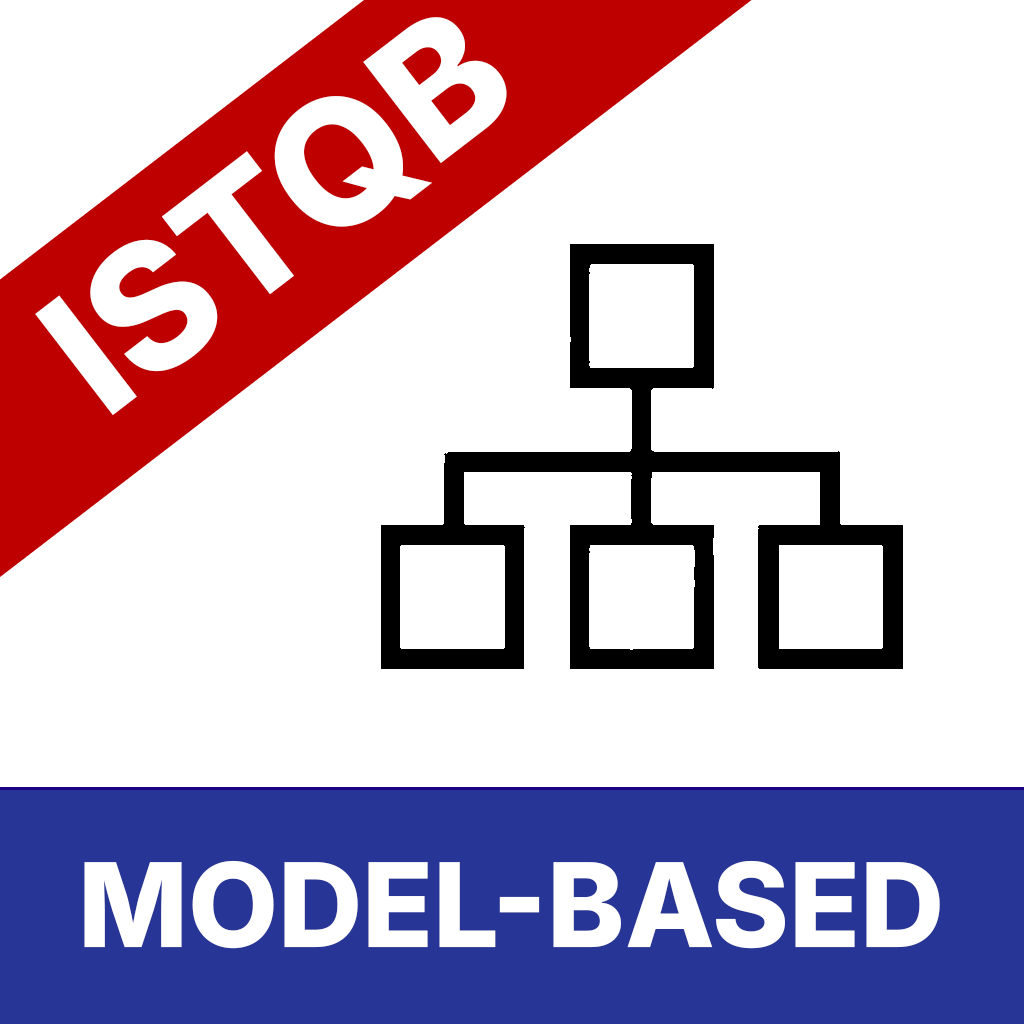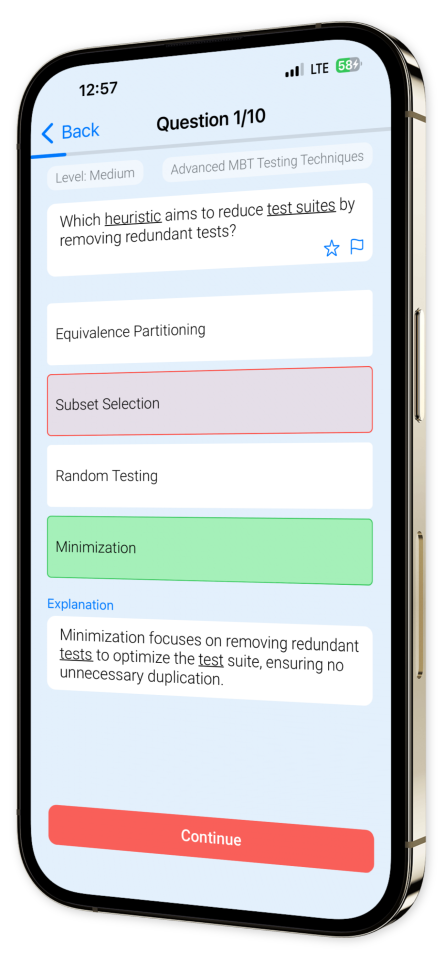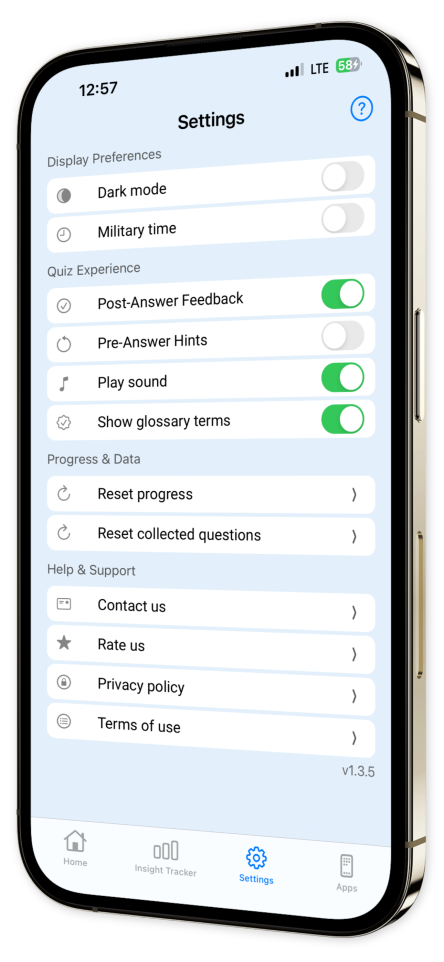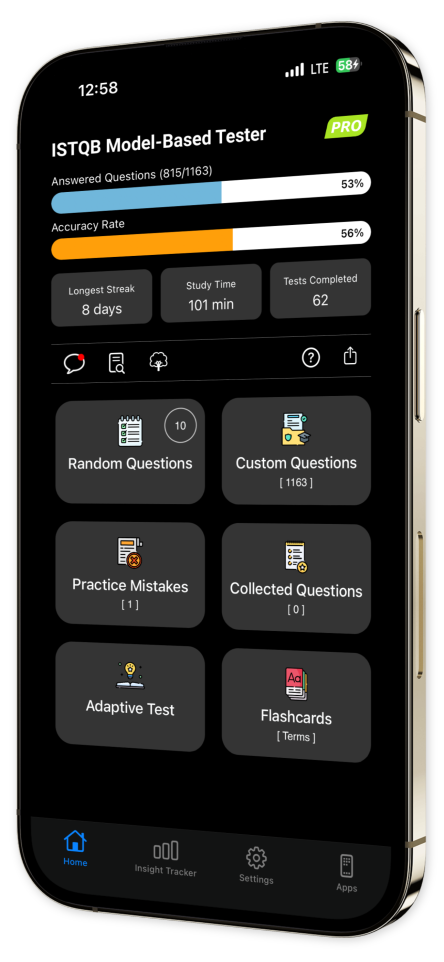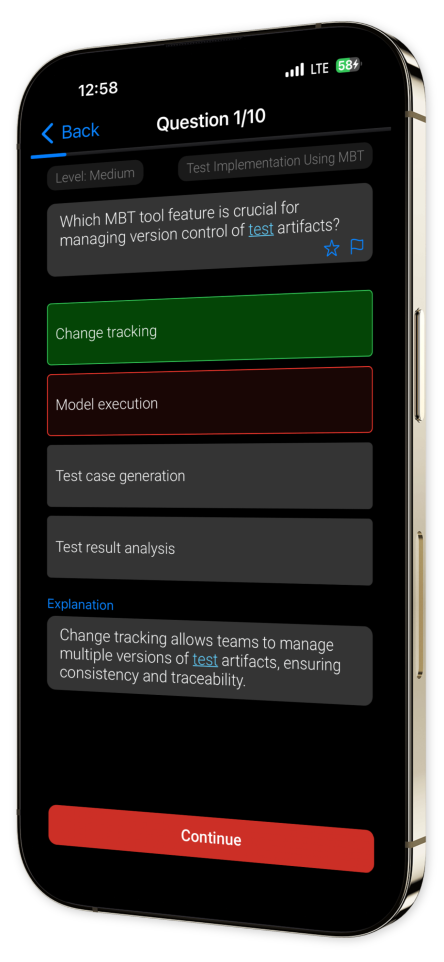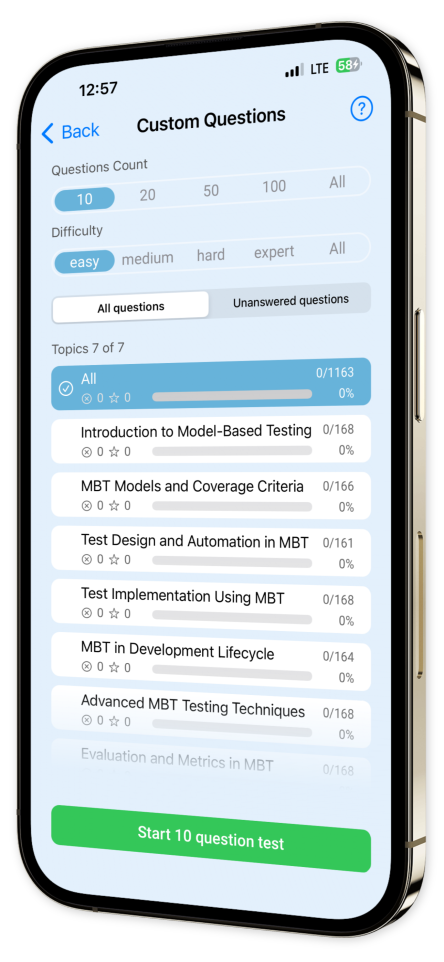
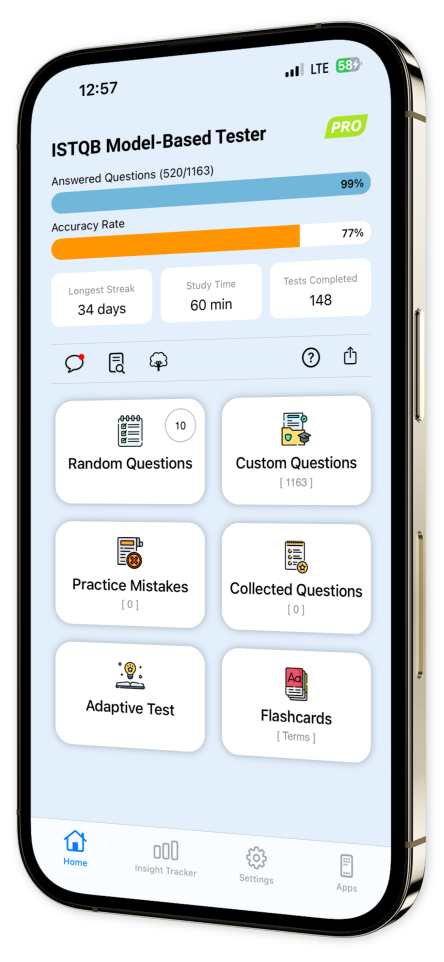
ISTQB Model-Based Tester iOS
Prepare to excel in your ISTQB Model-Based Tester exam with the ISTQB Model-Based Tester app!
Envisioned to place you in a multifaceted testing environment, our app is meticulously crafted to cover every pivotal topic necessary for Model-Based Testing certification.
Each query is seamlessly integrated with comprehensive explanations, ensuring that your knowledge deepens and your skills broaden as you prepare to conquer the exam arena.
Key Features:
Extensive Question Bank: Delve into a vast collection of practice questions that encapsulate all critical areas, guaranteeing an exhaustive preparatory experience.
In-Depth Explanations: With each question, gain a deeper understanding through meticulous rationales that bolster your learning and information retention.
Customizable Quizzes: Tailor your learning journey by creating quizzes that target specific topics and question types, allowing you to focus your efforts on areas that demand the most attention.
Progress Tracking: Monitor your advancement over time with our clear, insightful progress tracking capabilities.
Offline Access: Study on your terms, anytime, anywhere, without the necessity of an internet connection—ideal for flexible, on-the-go learning.
User-Friendly Interface: Master the art of model-based testing with an app designed for ease of use, keeping you engaged and focused on what matters most—your success.
Embark on a journey towards excellence. Download the ISTQB Model-Based Tester app now and immerse yourself in a dynamic, efficient, and effective test preparation experience.
With ISTQB Model-Based Tester, you're not just preparing—you're preparing to excel.
Join a community of learners dedicated to mastering the intricacies of model-based testing and ensure your success in the certification exam!
Content Overview
Explore a variety of topics covered in the app.
Example questions
Let's look at some sample questions
Which of the following is a primary benefit of using Model-Based Testing (MBT)?
Reduced need for documentationImproved test coverageIncreased test case duplicationSimplification of system modeling
Model-Based Testing helps in improving test coverage by using models to represent the desired behavior of a system, thus ensuring that all scenarios are tested.
What is a primary challenge associated with maintaining an MBT model over time in a rapidly changing software development environment, and how can it be mitigated?
The model becomes too complex; mitigate by simplifying features in the software.The model quickly becomes outdated; mitigate by implementing continuous integration and continuous model updates.The model is too resource-intensive to maintain; mitigate by reducing model details.The model requires too much initial investment; mitigate by outsourcing model development.
In rapidly changing environments, MBT models can become outdated as the software evolves. This can be mitigated by implementing continuous integration and ensuring that models are updated consistently along with the software they represent. This synchronization helps maintain the relevancy and effectiveness of the models over time.
In a model-based testing (MBT) project, which role is primarily responsible for designing the test models used to generate test cases?
Test AnalystTest ManagerModel ArchitectAutomation Engineer
In MBT projects, the Model Architect is typically responsible for designing test models. These models serve as a blueprint for generating test cases and are crucial for ensuring thorough test coverage.
In which situation would Model-Based Testing be particularly beneficial?
When a project requires manual testing of a very simple applicationWhen developing real-time embedded systems with complex state machinesWhen focusing on enhancing the system's usability and user interfaceWhen debugging code with low complexity and minimal state changes
Model-Based Testing is particularly beneficial in scenarios involving complex systems with numerous states and transitions, such as real-time embedded systems. It helps manage the complexity by generating relevant test cases to ensure comprehensive testing.
Which of the following best describes the purpose of validating model completeness in MBT?
To ensure the model includes all possible system behaviorsTo find the cheapest solution for the systemTo reduce the model to only the most critical functionsTo restrict the model to developer requirements only
Validating model completeness ensures that the model adequately represents all possible behaviors and scenarios of the system under test, making it comprehensive and effective for testing.
In model-based testing (MBT), which of the following best encapsulates the concept of a 'reusable test design pattern' when automating tests for a web application that follows a RESTful architecture?
A predefined test sequence that can be adapted for various endpoint response formats to validate CRUD operations.A singular, static test case applied across all endpoints without modification.A test design pattern strictly tied to a specific API version, ensuring all updates require entirely new test cases.A pattern that relies on manual steps for validation, ensuring each operation is inspected by a human tester.
A reusable test design pattern in MBT is a predefined sequence or framework that can be adapted to various scenarios, such as different response formats in a RESTful API. This allows for efficient testing of CRUD operations without needing to rewrite the entire test sequence for each specific case.
When implementing MBT in a development lifecycle, which team activity helps in ensuring that all stakeholders have a unified understanding of the model?
Individual WorkJoint ReviewsCode RefactoringSystem Deployment
Joint Reviews are collaborative meetings where stakeholders discuss and agree on the model, which ensures that everyone has a unified understanding of the MBT process.
When might metrics derived from MBT models be misleading?
When used to predict defect densityWhen aligned with business goalsWhen regularly validatedWhen incorporated with quality gates
Metrics can be misleading if they predict defect density without considering model assumptions and limitations.
Given a model with 150 elements and 50 required, calculate completeness if 40 required are directly covered.
66%80%75%60%
Model Completeness = (Covered Required Elements / Total Required Elements) * 100 = (40 / 50) * 100 = 80%. Verified: (40/50) = 0.8, 0.8 * 100 = 80%, repeated calculation is consistent.
Which metric primarily indicates undeveloped model areas in MBT?
Execution TimeBacklog ItemsUnknown Model AreasModel Coverage Gaps
Model Coverage Gaps metric identifies parts of the model not yet developed or tested, which indicates areas that might need further attention.
